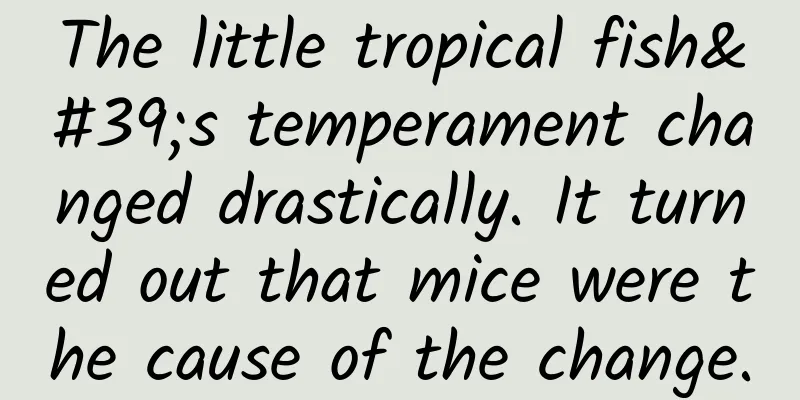How precious are the "parent seeds" targeted by foreign spies? Seed source safety is a big deal

|
Recently, a case of spies stealing hybrid rice parent seeds in my country has attracted widespread attention. This makes people wonder what is so special about these seemingly ordinary seeds that they can attract the attention of spies? What are parent seeds? Different from general seeds, parent seeds usually come from plants with excellent traits that have been selected and cultivated. They are the original seeds used to reproduce offspring. These seeds are highly pure and stable in genetics and can pass on the genetic characteristics of their parents (i.e., parents) to the next generation, maintaining the excellent traits of the variety. ▲Seed safety is a big deal Parent seeds play an important role in plant breeding and planting. They are often used to produce hybrid seeds or conduct breeding experiments to ensure that the next generation of plants has the desired traits. For example, in rice planting, by selecting parent seeds with excellent traits for hybridization, hybrid rice with high yield and lodging resistance can be cultivated to meet people's needs for food production. In addition, parental seeds are also the basis for variety improvement. In the rice breeding process, hybrid offspring with excellent traits can be obtained by hybridizing different parental seeds. These hybrid offspring may have multiple advantages such as high yield, disease resistance, and high quality, which can help meet different agricultural production needs. Therefore, selecting rice plants that are suitable as parents is crucial to achieving continuous improvement and progress of rice varieties. Parent rice seeds are important germplasm resources in my country's food security field. In order to maintain the purity and quality of the seeds, strict management and preservation measures are usually required. This includes storing the seeds in a specific environment, avoiding mixing with other seeds or contaminants, and regularly reproducing and renewing the seeds to maintain their genetic characteristics. Difficulty in obtaining parent rice seeds Chinese scientists have made tremendous efforts to find parents of hybrid rice. As early as 100 years ago, scientists proposed the theory that rice has hybrid vigor, but it is difficult to implement in practice. One important reason is that rice is monoecious and self-pollinating. Self-pollination naturally cannot obtain hybrid vigor. In this case, one way to get hybrid rice parents is to artificially remove the male seeds, but rice flowers are tiny and fragmented. Although it is theoretically feasible, it is impossible to do it in practice. So scientists can only seek another strategy - to find a rice variant "male sterile line" that only has pistils and cannot self-pollinate. To reproduce, it can only be hybridized with other rice. ▲Rice breeding For a long time, rice breeders around the world have been struggling to find male sterile lines in nature. From the paper published by Academician Yuan Longping 60 years ago, we can see the difficulties that Chinese scientists experienced in their search. They took magnifying glasses and tweezers and repeatedly screened each rice plant in the experimental field one by one in the hottest noon, and finally found 6 male sterile plants. Although the results were gratifying, in subsequent hybridization experiments, these hybrid rices could not achieve 100% sterility in offspring, and many of them gained the ability to self-pollinate. To solve this problem, scientists could only look for sterile lines from natural rice. After long-term efforts, they finally successfully found wild male sterile plants in wild rice in Sanya, Hainan in 1970, which are the famous "wild rice". With the help of wild rice, my country successfully built a "three-line" hybrid rice system in 1973, using three parental plants to achieve hybrid breeding. The success of hybrid rice is called the "Second Green Revolution", which helped China complete the transition from "food shortage to food security". However, the "three-line hybrid" has limitations such as complicated breeding process and many operation links. So scientists began new explorations. In 1973, scientists discovered a special rice plant in Hubei. The "male sterility" and "male fertility" of this rice plant can be transformed into each other. It will be "male sterile" when heading under long-day conditions, and "male fertile" when heading under short-day conditions. This important discovery opened the precedent for the breeding of "photosensitive nuclear sterile rice". ▲A bumper harvest of rice ears On this basis, Yuan Longping proposed the development strategy of hybrid rice from the "three-line method" to the "two-line method" in 1987. In the 1990s, my country's two-line hybrid rice research made breakthrough progress, and the average yield per mu increased again. Subsequently, my country launched the "Super Hybrid Rice Breeding Research Program" to produce higher-yield hybrid rice. In recent years, with the improvement of genetic engineering, hybrid rice has begun to expand towards the "one-line method". Combined with gene editing technology and apomixis, hybrid rice may achieve more jaw-dropping breakthroughs in the future. Eating is a bigger problem than anything else China is a country with a large population, and the problem of food is of paramount importance. Parent seeds are the starting point of hybrid rice. Only by protecting them well can we hold our rice bowl more firmly. The Seed Law of the People's Republic of my country clearly stipulates that the state has sovereignty over germplasm resources, and no unit or individual may provide germplasm resources to foreign countries without authorization. Even ordinary seeds must be reported and approved before they can be exported or cooperated with foreign institutions. Moreover, in the case disclosed by the Ministry of State Security, the spies stole the important germplasm resources in my country's food security field - the parent seeds of hybrid rice. ▲Keep your job This means that the other party may master the core technology of hybrid rice in my country, thus posing a threat to the development of my country's agriculture. On the one hand, by obtaining high-quality rice parent seeds in my country, foreign countries can conduct in-depth research on their genetic characteristics, tap into their potential value, and then cultivate better quality and high-yield rice varieties. These rice varieties may flow back to China at high prices, causing us to bear higher seed costs and increase the cost of food for Chinese people. From a worse perspective, foreign forces may also destroy the high-yield advantage of hybrid rice through reverse research, or even develop drugs or pests specifically for hybrid rice. The consequences of following this line of thought are unimaginable, because modern biological weapons often involve species invasions at the genetic level of crops. A grain of food can save a country, but it can also bring it down. Through decades of hard work, seed industry scientists such as Yuan Longping developed hybrid rice, which has helped 1.4 billion people escape hunger. We should be prepared for the most serious consequences of this, strengthen the urgency of protecting agricultural scientific research results and the crackdown on agricultural spies, and always keep our rice bowl in our own hands. |
Recommend
“Hot” private domain traffic, “Shuanghuanglian” on the B-side?
The popularity of the concept of private domain t...
Wild boars are causing harm in 26 provinces! How to prevent wild boars from running wild?
On October 25, a wild boar broke into a roadside ...
Did you know that many of the firsts in Chinese civilization came from Henan?
The earliest playable musical instrument, the ear...
Why is the bottom of a beverage bottle designed to look like a flower? Is it for beauty or to hold less?
Expert of this article: Li Yilan, PhD in Chemistr...
Traditional Chinese medicine yoga health care expert Mi Luo: 11 Qi and blood double beauty classes to make you beautiful until old age
Traditional Chinese Medicine Yoga Health Care Mas...
How Skyworth can gain a firm foothold in the box market by combining hardware and software
How to make the TV at home smarter and easier to ...
Android WeChat released version 7.0.22, adding many new features
Recently, Android WeChat released the official ve...
When doing new media marketing in 2019, these 5 trends must be paid attention to!
There were many successful marketing cases in 201...
The trade war has made it difficult to sell American cars, with sales falling 22.9% in June
Affected by the Sino-US trade friction, Chinese c...
PMS APP installation process analysis
PMS (PackageManagerService) is the core of the An...
Smart TV, let's talk about this industry
LeTV's "Refresh 4x4" conference at ...
How to promote App channels effectively? 3 stages!
APP channel promotion needs to go through three s...
WeChat small stores promote products and create a long-term compound interest cycle with explosive sales! Earn 300-800 yuan per day
WeChat small stores promote products and create a...
UGC is not active? 3 angles to teach you how to create hot topics!
iG won the championship, and the circle of friend...
What channels are used to purchase traffic for mobile games? This article tells you!
I recently spent two weeks traveling around the c...









